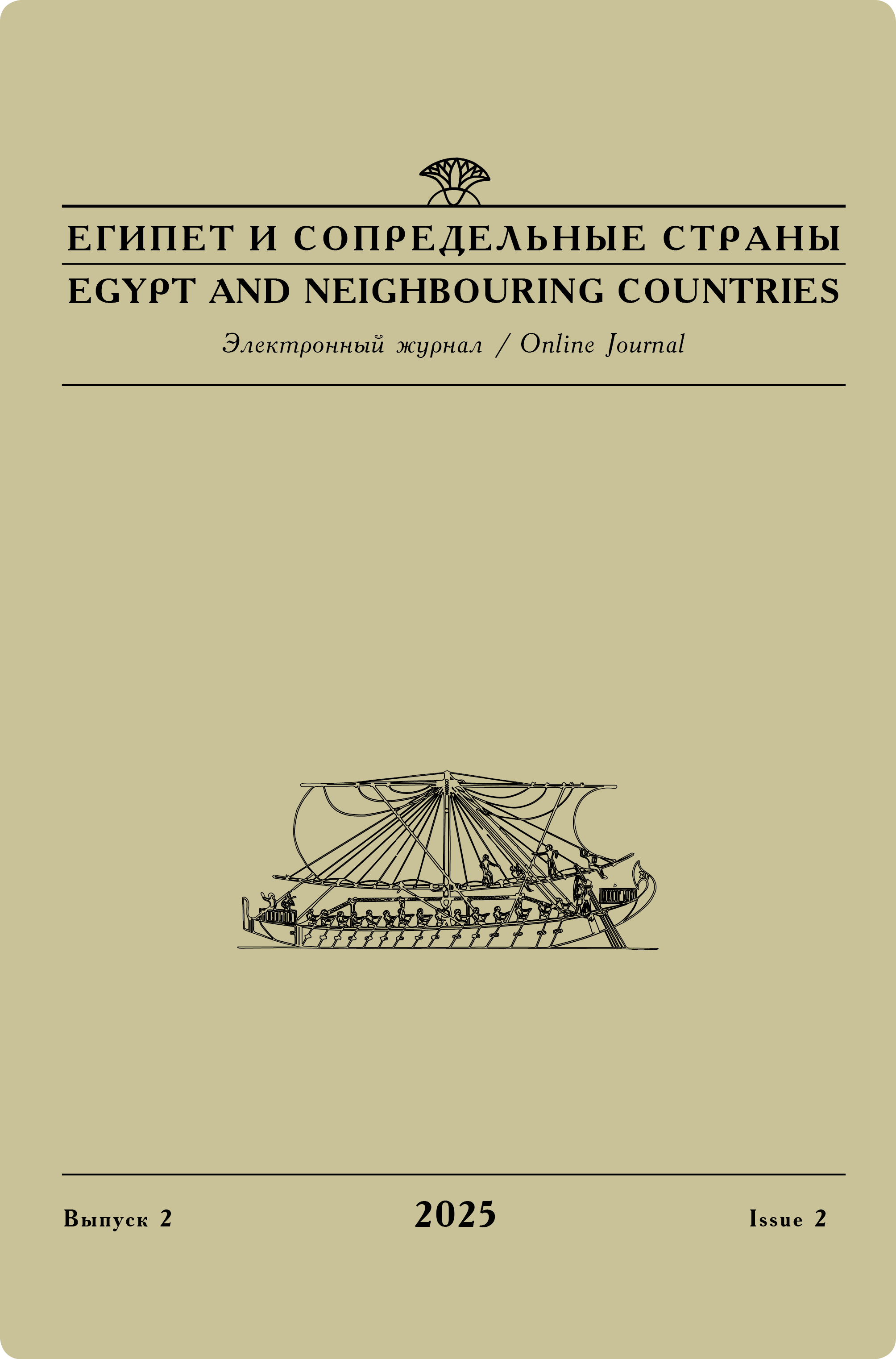Issue 3, 2021
R. A. Orekhov, L. V. Tishkina
Istoriografiia rannego Memfisa [Historiography of early Memphis]
Historiography of early Memphis is mainly based on the information of ancient authors — Herodotus and Diodorus Siculus. Egyptians themselves did not leave us information of this kind. K. Sethe had a different opinion. In his research, he collected almost all written pieces of evidence about an alleged early capital, which he conditionally called the White Walls. Since then, a century passed, but new information about this city did not appear. As a consequence, solving the issue of early Memphis became the main task of various archaeological schools. Now, there are three main approaches among scholars. Some of them consider the appearance of this city as a result of the political expansion of the Naqada II culture into Lower Egypt. Others focuses on cultural diffusion, as a result of which, with the constant interaction of predynastic cultures of the north and south, west and east of the country, ‘Memphis’ gradually became the capital of a single centralized state. And finally, the third group of scholars supposes the fact that there was no city as such in the initial period of Egyptian history, since ‘Memphis’ during this period was a chain of villages stretching along the necropolis of the eastern and western banks of the Nile. As a result, ‘Memphis’ was perceived at this stage as the ‘Capital of the Dead’. And only at the beginning of the 3rd Dynasty, the city acquired important religious, cultural and political significance.
Keywords:
Early Memphis, White Walls, K. Sethe, W. Kaiser, С. Köhler, D. Wengrow, D. Jeffreys.
Original language — Russian.
DOI: 10.24412/2686-9276-2021-00016.
Referring: Orekhov R. А., Tishkina L. V. Historiography of early Memphis [in Russian] // Egypt and neighbouring countries 3 (2021): 24–36. DOI: 10.24412/2686-9276-2021-00016.
Read full article




